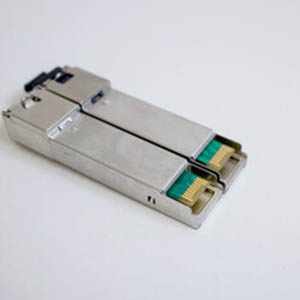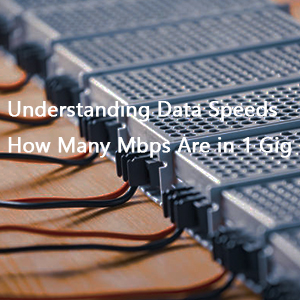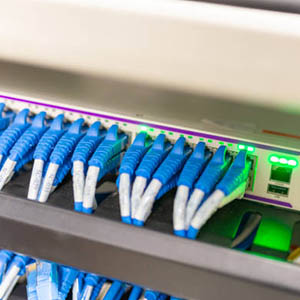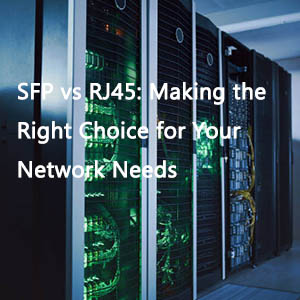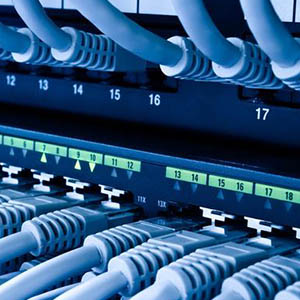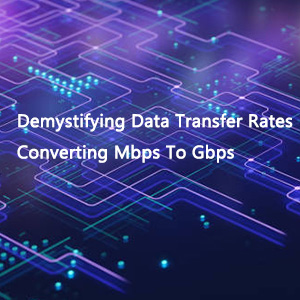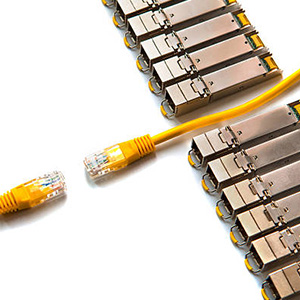The QSFP-DD, heralded as the most compact form factor for 400G transceivers, is gaining traction among fiber optic manufacturers for its exceptional bandwidth density and backward compatibility with slower-speed QSFP modules and cables. As the latest sensation in 400G optical transceiver technology, QSFP-DD is frequently juxtaposed with other high-speed modules such as QSFP56, OSFP, CFP8, and COBO. This article will elucidate the distinctions among these optical modules with precision.
| Form Factor | QSFP-DD | QSFP56 | QSFP28 | QSFP+ |
|---|---|---|---|---|
| Released Year | 2016 | 2018 | 2016 | 2010 |
| Number of Electrical Interface Lanes | 8 | 4 | 4 | 4 |
| Single Channel Rate | 25Gbps/50Gbps | 50Gbps | 25Gbps | 10Gbps |
| Modulation Technology | NRZ/PAM4 | PAM4 | NRZ | NRZ |
| Backward Compatibility | QSFP+/QSFP28/QSFP56 | QSFP+/QSFP28 | QSFP+ | / |
QSFP-DD: A Comprehensive Overview
QSFP-DD, also known as QSFP56-DD, stands for Quad Small Form Factor Pluggable Double Density. It is fully compliant with IEEE802.3bs and QSFP-DD MSA standards. The “double density” signifies that the module supports twice the number of high-speed electrical interfaces compared to a standard QSFP28 module. Leveraging NRZ modulation technology, each channel can achieve a data rate of 25Gb/s, enabling 200G network transmission. Furthermore, with PAM4 modulation technology, each channel can reach 50Gb/s, facilitating 400G network transmission—ideal for high-performance computing data centers and cloud networks.
Advantages of the QSFP-DD Form Factor
- Backward Compatibility: QSFP-DD supports existing QSFP modules, offering flexibility for end-users and system designers.
- Stacked Integrated Cage/Connector: A 2×1 stacked design supports both one-high cage connectors and two-high stack cage connector systems.
- SMT Connector and 1xN Cage Design: This design supports at least 12W per module, reducing heat dissipation requirements and associated costs.
- ASIC Design: Supports multiple interface rates and is fully backward compatible with QSFP+ and QSFP28 modules, reducing deployment costs.
| Performance | CFP8 | OSFP | QSFP-DD | COBO |
|---|---|---|---|---|
| Volume | 1 | 2 | 3 | 4 |
| Power Consumption | 3 | 2 | 1 | 4 |
| Cost | 1 | 3 | 4 | 2 |
| Maturity | 4 | 3 | 2 | 1 |
| Compatibility | 3 | 2 | 4 | 1 |
| Difficulty for Operation & Maintenance | 2 | 3 | 4 | 1 |
| Overall Ratings | 14 | 15 | 18 | 13 |
Comparative Analysis
- Structure: QSFP-DD modules, while sharing the same dimensions as QSFP+, QSFP28, and QSFP56, feature an 8-lane electrical interface compared to the 4-lane interfaces of other QSFP modules. The ASIC ports of QSFP-DD are doubled to support interfaces like CAUI-4, necessitating a slightly deeper mechanical interface on the host board.
- Bandwidth & Application: QSFP-DD modules support 400Gbps, surpassing the 40Gbps, 100Gbps, and 200Gbps capabilities of QSFP+/QSFP28/QSFP56. QSFP-DD is thus the transceiver of choice for 400G data center interconnections, while the latter modules serve 40G/100G/200G networks.
- Backward Compatibility: QSFP-DD’s backward compatibility with previous QSFP system transceiver modules allows for a technical upgrade to increased bandwidth without the need for equipment replacement, reducing network upgrade costs.
QSFP-DD vs. OSFP/CFP8/COBO
- QSFP-DD vs. OSFP: OSFP, with its eight high-speed electrical lanes, initially supports 400Gb/s and can reach up to 800Gb/s. While slightly larger than QSFP-DD, OSFP does not offer backward compatibility due to its size difference.
- Power Consumption: QSFP-DD typically consumes 7-12W, whereas OSFP may reach 12-15W, indicating a potential advantage in performance for QSFP-DD.
- Fiber-Life OSFP Modules: Utilizing the latest technology, these modules support up to 800Gbps, offering network operators and enterprise users superior performance, including support for both Ethernet and InfiniBand protocols.
- QSFP-DD vs. CFP8: With a larger form factor and higher power consumption, CFP8 delivers more bandwidth than 100G solutions but lacks the backward compatibility and portability of QSFP-DD.
- QSFP-DD vs. COBO: COBO, designed for internal installation on line-card equipment, lacks the flexibility and hot-pluggable capability of QSFP-DD, making maintenance more challenging.

Market Maturity and Future Prospects
The market maturity of QSFP-DD, OSFP, CFP8, and COBO form factors indicates that QSFP-DD and OSFP are favored for their higher ratings, with QSFP-DD being particularly suited for data center applications. As 400G Ethernet adoption grows and single-wave 100G technology matures, the stage is set for 800G. The QSFP-DD800 MSA has released specifications for a new generation of QSFP-DD800, heralding the potential for 800G to adopt the QSFP-DD form factor, offering significant advantages for Internet service providers.
Fiber-Life: Pioneering High-Speed Network Solutions
Committed to delivering reliable and efficient high-speed network solutions, Fiber-Life offers a range of 800G QSFP-DD optical modules. Each module undergoes stringent testing and is certified to international standards. With a focus on quality assurance and inventory management, Fiber-Life is well-positioned to meet customer needs promptly.

